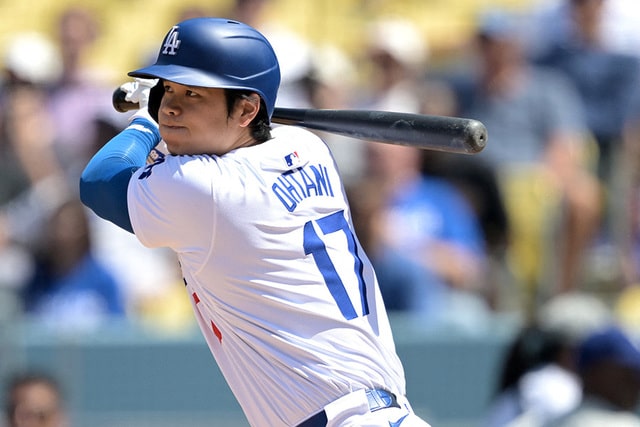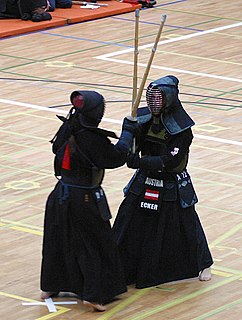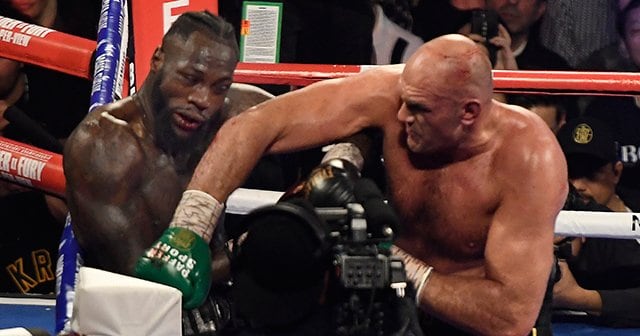
In boxing, a clinch is more than just a break.
In fact, it is one of the most important techniques from a tactical point of view, and when used appropriately, you can control the flow of the match, not only tiring your opponent, but also creating opportunities to secure advantageous positions for yourself. can.
This article details how to use the clinch effectively, techniques to practice it, and what role the clinch plays in boxing tactics.
Master the art of clinch to improve your boxing skills and fight smarter in the ring.
目次
What is a clinch in boxing? Basic definition and importance
In boxing, a clinch is when both fighters grapple each other in close proximity.
This technique is used to strategically pace a match or temporarily escape an opponent’s attack.
The clinch is also used as a temporary respite for fighters to regain balance in the ring when they are tired or overwhelmed.
However, the importance of the clinch is more than just a rest, it is a very important tactical element to change the flow of the match in your favor.
Basic purpose and effect of clinch
The main purposes of a clinch are wide-ranging, including:
- Defense : Use this when your opponent is attacking hard or taking damage to protect yourself from attacks.
- Rest : You can use the clinch to temporarily slow the pace of the fight and regenerate your health.
- Evaluation : During a clinch, you can observe your opponent’s strategy and next moves, and plan your next action.
- Positioning : You can use the clinch to adjust your position in the ring and secure a favorable position.
The clinch plays an important role in a boxing match as an effective means to achieve these goals.
The role the clinch plays in tactics
The clinch plays a huge role in tactics, most notable in the following ways:
- Pace control : clinch allows you to adjust the tempo of the match to your own pace. This makes it easier to devise strategies to advance the match in your favor.
- Interrupt your opponent’s attacks : By clinching when you are receiving continuous attacks, you can disrupt your opponent’s rhythm and cut off the flow of attacks.
- Strategic Repositioning : Use the clinch to temporarily create distance, giving you an opportunity to reconsider and reposition your strategic position and posture.
The clinch is a technique used by skilled fighters not only to give the fighter rest, but also to gain a tactical advantage.
Therefore, in order to use the clinch effectively, it is important to understand the technique correctly and practice it at the right time.
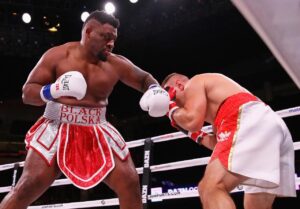
Correct clinch practices and techniques
In boxing, the clinch is much more than simply grappling with your opponent.
A clinch executed correctly has the potential to change the course of a match.
Learn how to enter, position your hands, and use your body to effectively use the clinch.
How to enter the clinch: Approach from the basic position
How to enter a clinch will vary depending on the distance to your opponent and the current situation, but the following is a safe approach from the basic position.
- Assess Distance : Before entering the clinch, assess the appropriate distance from your opponent. If it’s too far away, it will be difficult to enter, and if it’s too close, you may take unnecessary damage.
- Maintain your guard : Maintain a tight guard to protect your face and body during the approach. This reduces the risk of being countered while entering the clinch.
- Step In : When approaching your opponent, use feints or jabs to distract them, then step in to close the distance. This move must be done quickly but carefully.
Hand position and body usage during clinch
Hand position and body use after a successful clinch are critical to maximizing the effectiveness of the clinch.
- Hand position : When in a clinch, your hands are typically placed behind your opponent to limit their movement. The other hand can be used to block the opponent’s attacks or to grab the opponent’s hand.
- Body Use : Use your body weight to control your opponent during the clinch. You can push your opponent back by putting your weight forward, or you can limit their movement by putting one foot in front of them. Also, by pulling the opponent’s body towards you, you reduce the opponent’s chances of attack.
When clinching, it is important to practice technique while being aware of the referee’s intervention and break calls.
The clinch can be used not only for defense, but also as an opportunity to transition into attack, recover health, or tactically reset.
By mastering this technique, you will be able to deploy more diverse strategies in your boxing matches.

Clinch in boxing rules: what is allowed and what is illegal
Although the clinch is an inevitable part of boxing, the use of this technique is regulated by strict rules.
Although it is accepted that clinches can be used tactically, there are clear rules regarding how they are used to keep the sport fair and safe.
Below, we will explain the rules regarding clinch and the penalties that will be imposed if you violate them.
Clinch rules and referee criteria
The clinch rules and referee criteria are mainly based on the following points:
- No Excessive Clinching : Clinching should be done in a timely manner and for short periods of time without disrupting the flow of the match. Excessive clinching is considered unsportsmanlike and may result in a warning or penalty from the referee.
- How to Avoid Aggressive Clinches : Using the clinch as a means of attack is prohibited. For example, it is against the rules to use it to grapple and damage an opponent.
- Breaking the Clinch : If the referee determines that the clinch is being used for non-tactical purposes, he will instruct the fighters to break the clinch. Players must follow the referee’s instructions.
Examples of clinch penalties and violations
Violations in the clinch may result in the following penalties:
- Warning : First offense will result in a verbal warning from the referee. This is a measure to encourage players to abide by the rules.
- Point Deductions : Points may be deducted if there are repeated violations or if excessive clinching is deemed to be having a significant impact on the match.
- Disqualification : A player may be disqualified for extremely serious violations or failure to comply with the referee’s instructions.
The clinch is a legitimate tactical element in boxing.
Athletes are expected to use the clinch within the rules and respect sportsmanship.
Understanding the rules regarding clinch and practicing them in the appropriate manner is important to ensure a fair and safe match.

Tactics and combinations using clinch
In boxing, the clinch is not just a way to close the distance with your opponent, but an important technique for gaining a tactical advantage.
By using the clinch effectively, you can control the flow of the match and create opportunities for unexpected attacks on your opponent.
Below, we’ll dig into attacking tactics from the clinch and strategic transitions once you break out of the clinch.
Attack tactics from the clinch
Attack tactics from the clinch include the following methods:
- Use short punches : The distance in a clinch is very narrow, and short punches are effective from this distance. In particular, uppercuts and punches to the body can cause surprising damage to your opponent.
- Keep your opponent off balance : Use the clinch to disrupt your opponent’s center of gravity, causing them to lose their balance and create an opportunity to attack. Techniques such as gentle pulling, pushing, or weight application can help.
Strategic transition after releasing the clinch
The moment after the clinch is released has tactical implications.
The following strategies can be implemented immediately after leaving the clinch:
- Re-evaluating distance : Immediately after breaking the clinch, it is the moment when the distance between the two parties is reset. At this time, it is important to quickly regain distance and control your opponent with a jab before moving on to the next attack.
- Counter attacks : Your opponent may attack you when you leave the clinch. By anticipating its movements and intercepting it with a counter, you have a chance to inflict great damage on your opponent.
- Shift to aggressive attacks : By attacking aggressively immediately after releasing the clinch, you can overwhelm your opponent. At this time, use your footwork and apply pressure with consecutive punches.
Tactics and combinations that utilize the clinch create a variety of developments in boxing matches.
By honing not only your clinch techniques, but also your attacks from the clinch and your post-clinch strategies, you can greatly increase your options in the ring.
It is important to learn these techniques through practice and actual combat, and to apply them flexibly.
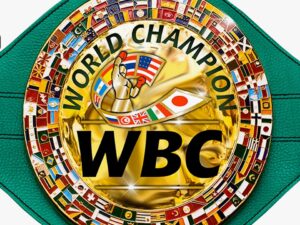
Examples and analysis of clinch in actual combat
Throughout boxing history, the clinch has played an important role in many famous matches.
Using the clinch properly can often change the flow of the match and directly lead to victory.
Here, we will analyze clinch tactics in famous matches and give examples of victories that took advantage of the clinch.
Tactical analysis of clinch in famous matches
-
Muhammad Ali vs. Joe Frazier (Thriller in Manila) : Ali used the clinch tactically in this legendary match. He used the clinch to avoid Frazier’s powerful left hooks, conserving his strength while controlling the pace of the match. Ali’s use of the clinch disrupted Frazier’s offensive rhythm and helped create advantageous situations late in the match.
-
Floyd Mayweather vs. Manny Pacquiao : Mayweather made good use of his defensive techniques and clinch in this fight. He was able to break up Pacquiao’s rapid strikes with a clinch, reducing his chances of attack. Mayweather’s tactics were effective in breaking Pacquiao’s rhythm and controlling the fight.
Examples of victories using the clinch
-
Wladimir Klitschko’s Career : Klitschko used his long reach and powerful jab to control his opponents, and used the clinch to disrupt his opponent’s attacks. He won many matches by using the clinch to control distance from his opponents and attack from advantageous positions.
-
Andre Ward vs. Sergey Kovalev : Ward tactically used the clinch in his fight against Kovalev to interrupt his opponent’s powerful punches and disrupt his offensive rhythm. He racked up points with speedy counters after breaking out of the clinch. This tactic of Ward played a key role in him defeating Kovalev.
These examples show that the clinch is more than just a defensive measure; it is an important element in tactically controlling the match and leading to victory.
Correct use and timing of the clinch can determine the outcome of a match, so it is extremely important for boxers to hone their clinch skills from a tactical standpoint.
